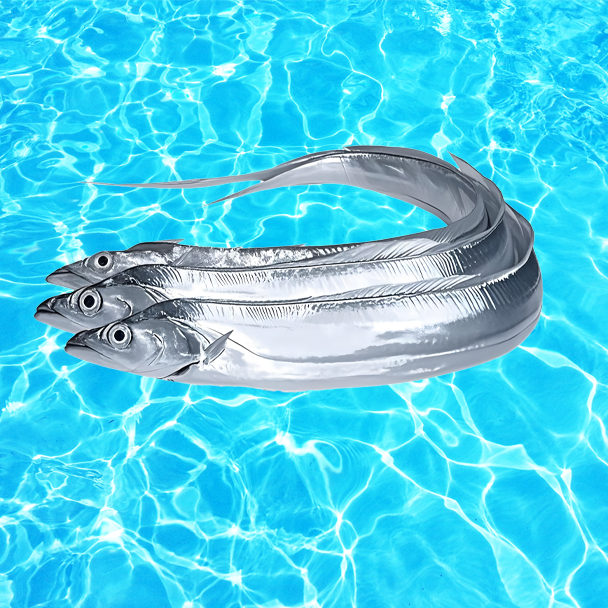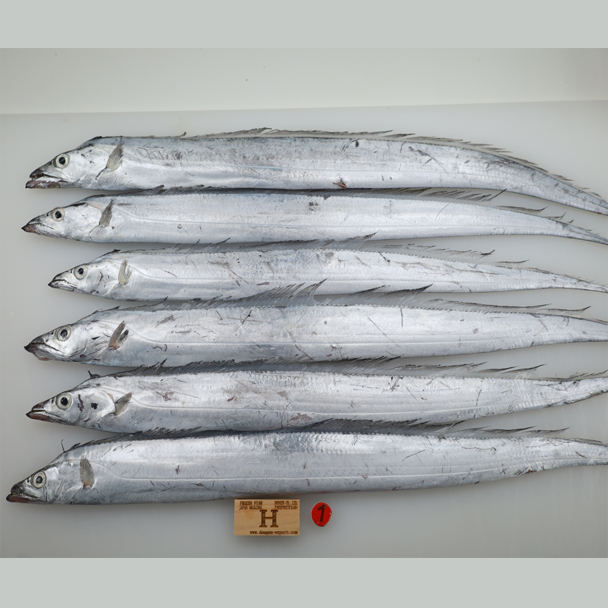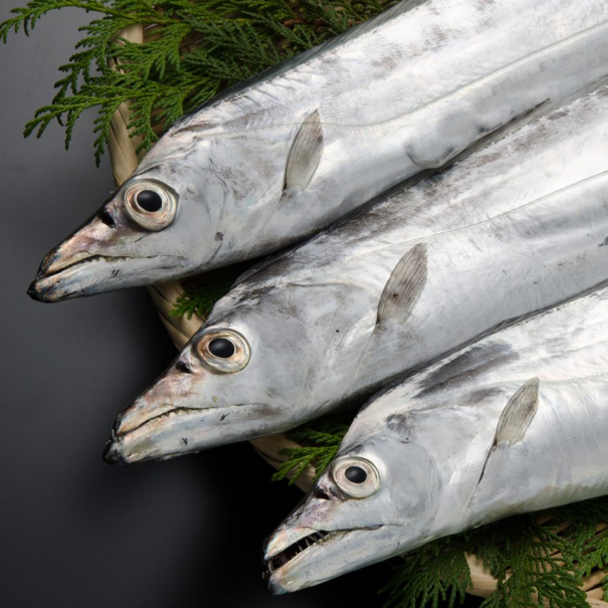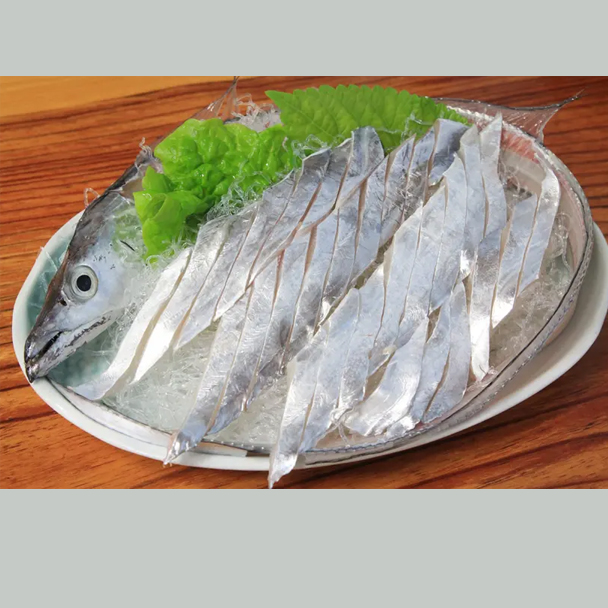








The Japanese hairtail, known in Japanese as "Tachiuo" (タチウオ), and scientifically as Trichiurus lepturus, is a long, ribbon-like marine fish belonging to the Trichiuridae family. It inhabits warm coastal waters around Japan and is especially abundant during the summer and autumn seasons. Due to its sword-like shape and shiny silver body, it is often referred to as the “swordfish” in Japan (not to be confused with Xiphias gladius).
The hairtail has a smooth, scaleless body that can exceed one meter in length. Its flesh is white, tender, low in bones, and has a clean, slightly sweet flavor with moderate fat content, making it a favorite among Japanese consumers. In Japanese cuisine, common cooking methods include salt-grilling, simmering in soy-based sauces (nitsuke), tempura, or drying as himono. It is also often marinated in miso or soy sauce and lightly grilled, bringing out its natural umami and delicate texture.
In addition to its appealing taste, the Japanese hairtail is rich in high-quality protein, calcium, phosphorus, vitamin D, and unsaturated fatty acids, contributing to its nutritional value. With its graceful appearance and auspicious symbolism, it is often served during festive occasions and traditional celebrations in Japan. Today, hairtail is not only a familiar dish on household dinner tables but also a popular, traditional ingredient in many Japanese restaurants.
